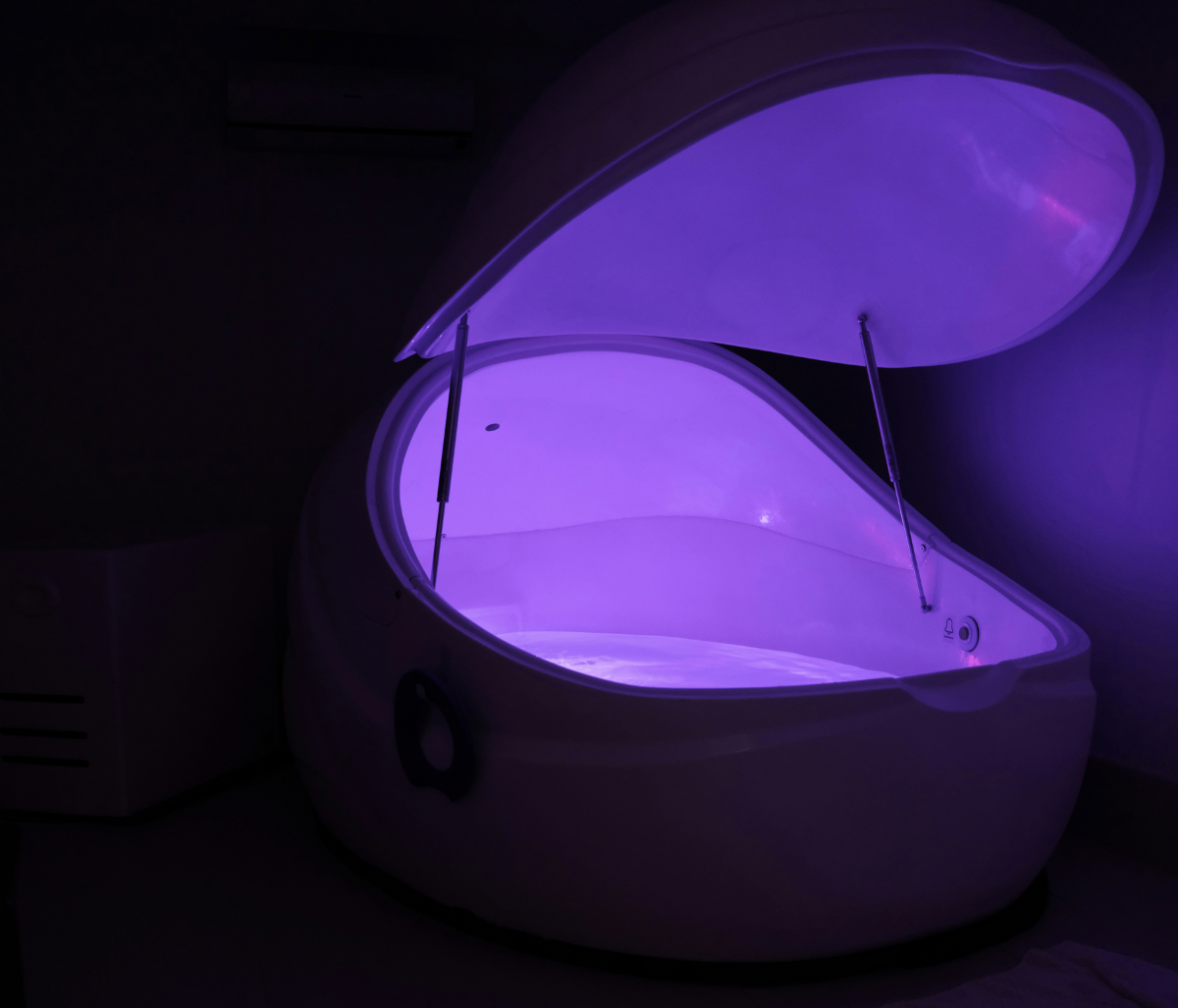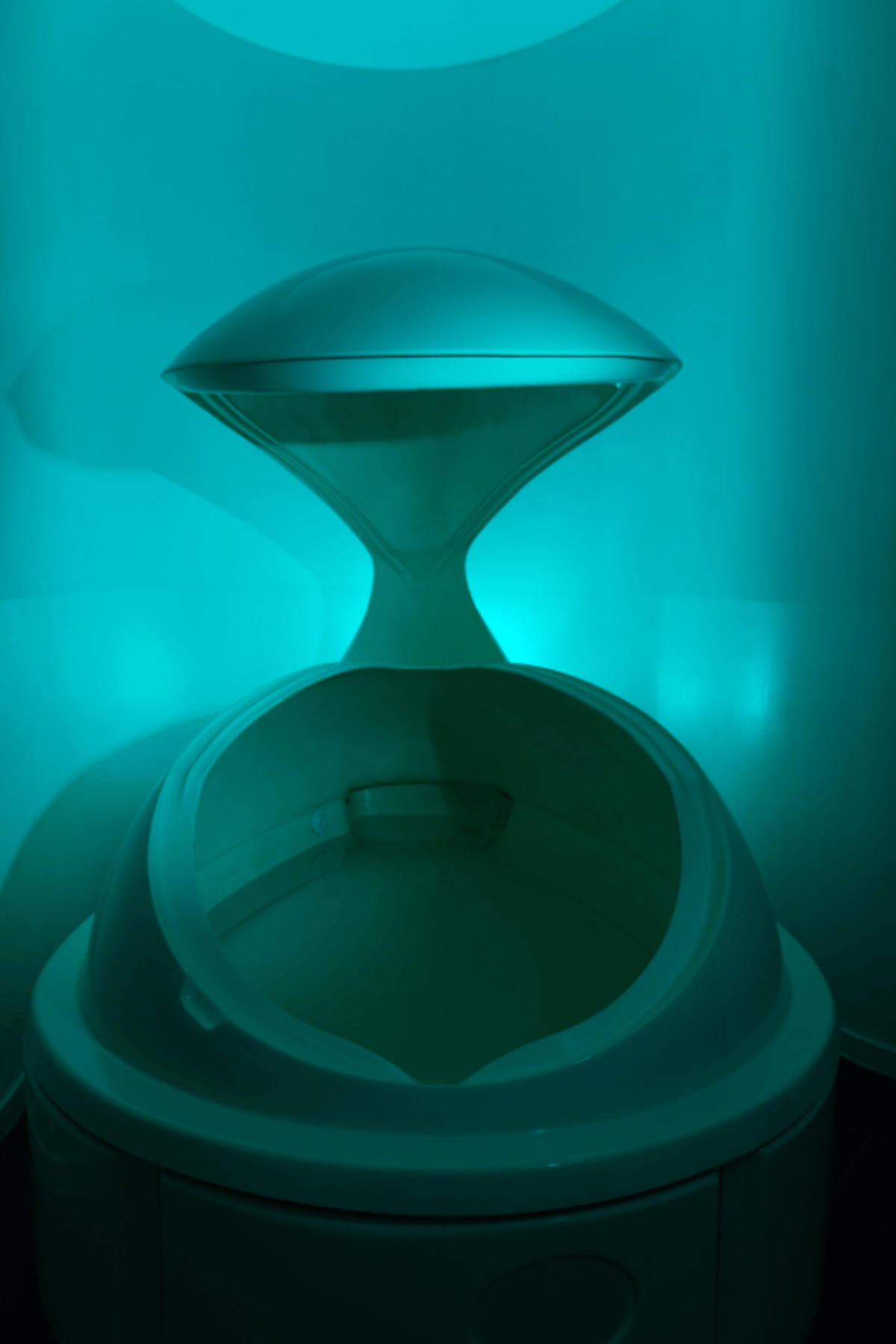Float Spa Benefits: Sensory Silence That Restores Body and Mind in Sanctuaries
Last update November 23, 2025
Float Spa therapy immerses you in warm, Epsom-salt water and sensory stillness, easing chronic pain, stress, and insomnia while refreshing immune function.
A float spa delivers flotation therapy, often called float therapy, inside purpose-built sensory deprivation tanks filled with skin-temperature salt water saturated by roughly 1,000 lbs of Epsom salt. Within this specially designed float pod or walk-in float room, external stimuli vanish so the nervous system can fully relax, initiating a cascade of calm. Studies show that only a few sessions can lower blood pressure, ease muscle tension and chronic pain, and deliver potent stress relief, tangible physical benefits that massage therapists often chase over weeks of work. Participants also describe a lingering post float glow, marked by better sleep quality and heightened overall well-being. What follows is a map of those benefits of floating, proving how a much-needed break in buoyant silence translates into long-term benefits for mind and body.
Table of Contents
Affiliate Disclosure
Some links in this post are affiliate links. That means we may earn a small commission, at no additional cost to you, if you choose to make a purchase. These are always brands, stays, or experiences we would recommend to a dear friend. Thank you for supporting the quiet sustainability of Terra Selene.
Float Spa Basics: What to Expect
Most float centers ask first float guests to arrive about twenty minutes early, shower, and begin a one-hour float session in a private suite. After rinsing off, you drift into salty water held at a skin-neutral water temperature of roughly 93.5 °F, so your body loses awareness of the boundary between flesh and fluid. The solution’s density, courtesy of a thousand pounds of Epsom salt, lifts you effortlessly, removing joint pressure and encouraging circulation. Lighting and music remain user-controlled, ensuring the float experience feels safe rather than confining. Most people find stress evaporating within minutes as breath slows and muscles soften.
How a Float Room Differs from a Float Tank
A classic float tank is a compact, egg-shaped vessel with a hinged lid, while a float room is a spacious, walk-in chamber that can even welcome pregnant women or pairs who prefer more room. Both rely on identical principles, Epsom-salt buoyancy, meticulous filtration, and total light control, but the room sacrifices a touch of sensory deprivation for extra headroom. Clients prone to claustrophobia often start in a room and graduate to a float pod once they realise the enclosure deepens stillness without inducing panic.
The Science of Salt Water Buoyancy
Salt water this dense changes physics in your favor: buoyancy unloads the spine, allowing discs to re-hydrate and lactic acid to flush from fatigued tissue. Magnesium ions from the Epsom salt may reduce inflammation and underpin superior athletic performance. Researchers also observe drops in systolic blood pressure and faster recovery times, evidence that mechanical unloading plus mineral uptake create a restorative milieu.
Physical Benefits Backed by Research
Systematic reviews catalogue wide-ranging physical benefits: decreased muscle tension, relief from chronic pain, improved spinal alignment, and healthier blood pressure profiles. Unlike massage therapy, which depends on the skill of individual massage therapists, floating applies uniform hydrostatic unloading to every joint, making it a reliable adjunct for people managing daily discomfort. Repeated floats also appear to boost immune function by lowering cortisol and balancing inflammatory cytokines, hinting at measurable gains in overall resilience.
Muscle Tension, Pain, and Recovery
Sports-medicine trials show that athletes who schedule three float sessions per week clear lactic acid more efficiently and return to training with less muscle tension, confirming enhanced athletic performance. Office workers with repetitive-strain injuries report a thirty-percent drop in back pain after only a few sessions, mirroring results typically achieved through multiple visits to massage therapists. Because the float tank supports the body in perfect alignment, postural muscles release, fascia lengthens, and recovery accelerates.
Immune Function and Inflammation
Chronic stress dampens immune function, and flotation’s swift shift into parasympathetic dominance seems to boost immune function by lowering cortisol and curbing pro-inflammatory markers. Early studies record meaningful drops in C-reactive protein after a short float protocol, suggesting the practice may reduce inflammation in conditions such as fibromyalgia. Though sample sizes remain modest, the convergence of subjective relief and biomarker change signals promising long-term benefits for overall well-being.
Mental Edge: Stress, Anxiety and Sleep
The neurological quiet of a float spa delivers unrivaled stress relief; by stripping away external stimuli, sensory deprivation allows the nervous system to reset, alleviating stress and quieting rumination. Controlled trials reveal sharp drops in anxiety scores and marked improvements in sleep quality after a single session, with the celebrated post float glow intensifying as participants continue to float. Unlike mindfulness apps that require cognitive effort, flotation therapy cradles the body so the mind can drift naturally, yielding benefits of floating that endure well beyond the hour in the tank.
Sensory Deprivation and the Brain’s Default Mode
Inside a float tank, external stimuli fall almost to zero, allowing the default-mode network (DMN), the brain’s storytelling hub, to power down. fMRI work shows functional connectivity between the posterior DMN and somatosensory cortices decreases significantly after a single float session, a pattern linked to calmer self-talk and lower perceived stress. Less rumination means the nervous system can fully relax, translating into measurable drops in muscle guarding and blood-pressure spikes.
Post Float Glow and Long-Term Benefits
Most floaters report an effervescent calm that lingers 24–48 hours—the famed post float glow. Controlled trials document better sleep quality in insomnia-prone adults after only a few sessions of flotation therapy. Over months, repeated floats appear to boost immune function by trimming cortisol and inflammatory cytokines, a hypothesis backed by emerging biomarker data. These long-term benefits position floating as more than a novelty; it becomes a strategic reset woven into overall well-being.
Who Should Try Float Therapy?
Athletes, Pregnant Women, and Jet-Lagged Travelers
Athletes chasing elite athletic performance use Epsom-salt buoyancy to flush lactic acid and cut muscle tension, returning to training fresher than after massage therapy alone.
Pregnant women (second and third trimesters) often find floating the only time spinal load vanishes, easing lumbar pain and swelling while cultivating a serene bond with the baby.
Frequent flyers reset circadian drift: a 60-minute float at destination reduces stress, steadies blood pressure, and accelerates time-zone adaptation.
Safety Considerations and Contraindications
Reputable float centers screen for epilepsy, severe kidney disease, uncontrolled hypotension, contagious skin conditions, and open wounds. Claustrophobia is not an absolute barrier; beginning in a spacious float room with partial lighting usually mitigates anxiety. Always consult your physician before your first float if you are pregnant (first trimester), have low blood pressure, or have any unstable medical condition.
Frequently Asked Questions
Does float therapy really work?
Yes. A 2024 single-blind RCT found six 1-hour floats delivered significant anxiety and depression relief with high safety and adherence. Parallel studies show notable pain reduction and cortisol drops after five sessions.
Negatives and Myths:
“Tanks are unsanitary.” False, the high-salinity brine plus UV and micron filtration meet or exceed pool guidelines.
“I’ll feel trapped.” Modern pods feature interior lights, wide doors, and even open-roof suites.
“Floating cures everything.” It’s powerful but not a stand-alone fix; think of it as a much-needed break that amplifies other mind-body practices.
Falling asleep in the tank:
If you drift off, the dense brine and neck halo keep airways clear. Gentle music or lights cue the end of your float session, so nodding off is safe, and often the sign of a deep parasympathetic reset.
Integrating Floating into Your Wellness Routine
Pair a weekly float with restorative yoga nidra, gentle craniosacral work, or a breath-led massage therapy session to weave its effects into a larger tapestry of wellness and relaxation. The buoyant stillness hydrates fascia and quenches muscular micro-tension, so hands-on bodywork that follows can sink past superficial layers and coax deeper release, amplifying joint mobility while further reducing inflammation, see our guide to somatic mind-body practices for deeper nervous system support. Schedule your massage or nidra class within three hours after a float to ride the nervous system’s naturally prolonged parasympathetic window; finish with a magnesium-rich herbal tea and ten minutes of mindful journaling to lock in the calm. Over time, this deliberate stacking of therapies cultivates a baseline of ease, where recovery, creativity, and emotional resilience arise not as occasional highs but as the everyday rhythm of a life lived lightly.
The Quiet Frontier of Wellness
In a world calibrated for constant stimulus, a float spa carves out a rare space of radical quiet. Wrapped in skin-temperature salt water, free from gravity and distraction, you rediscover a baseline where the mind can roam, the body can mend, and the soul can simply be. For a first-time visitor, it may feel almost otherworldly, an individual experience that defies the hustle you’ve come to expect from modern self-care. Yet its promise endures beyond novelty: whether you’re chasing sharper athletic performance, relief from chronic pain, or a refuge for overloaded senses, floating offers a concise prescription for whole-person wellness. One deliberate hour echoes as sustained vitality, creativity, and ease. Step in, let go, and watch your overall well-being rise gently to the surface.








